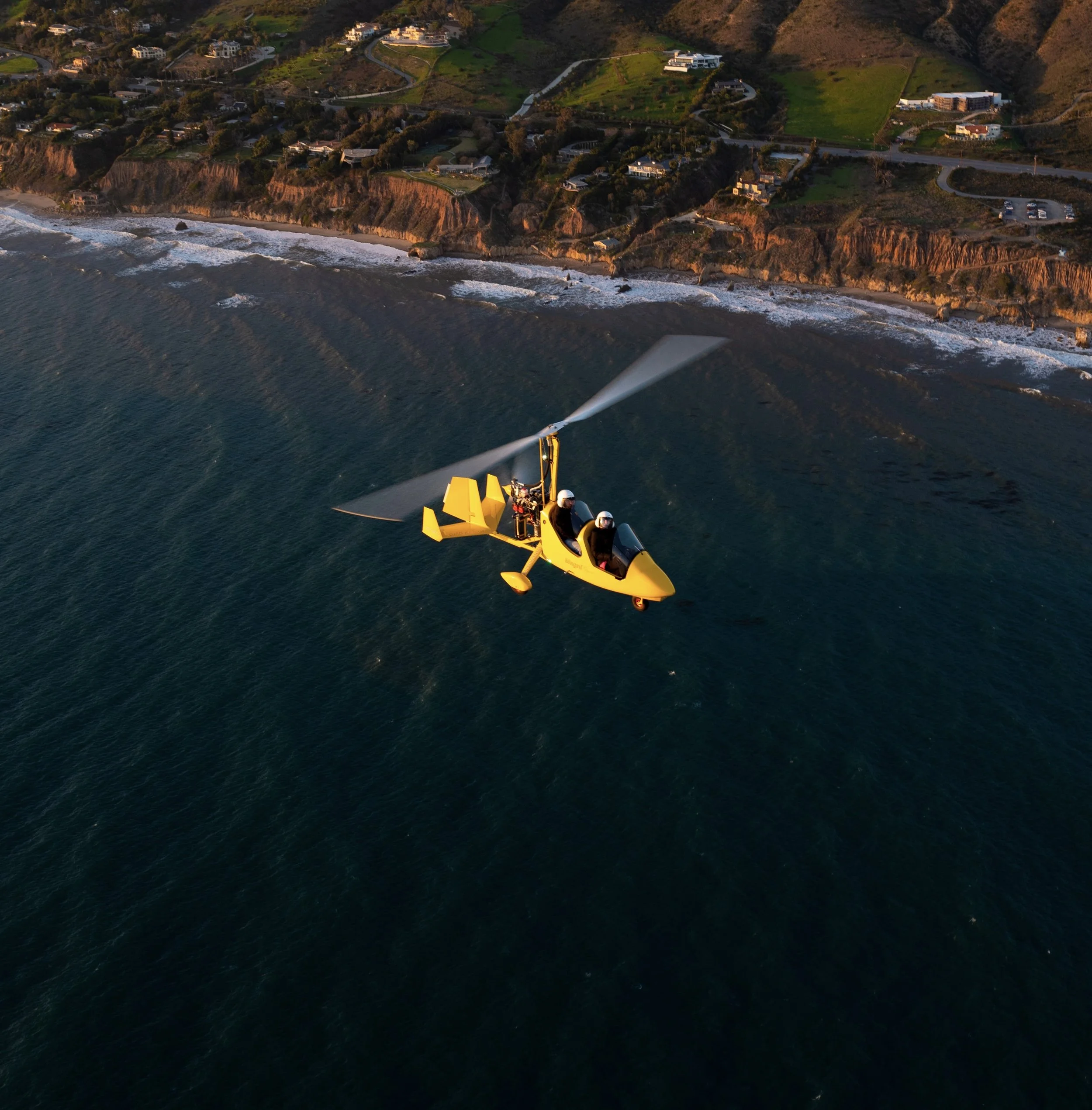
Flight Training
We offer flight training at multiple locations to fit your schedule and lifestyle, with certified instructors ready to guide you every step of the way
Types of Training
-

NEW PILOT
Are you a brand new pilot looking to get into aviation for the first time? Intrigued by the gyroplane and want to learn more?
We can help guide you through the process of ground school, flight training, and passing your checkride.
We recommend you begin with a Discovery Flight to experience the joy and pleasure of flying a gyroplane.
-

TRANSITION TRAINING
Are you an already rated pilot looking to transition to gyroplanes, or have experience in another make and model of gyroplane looking to get into Magnis?
Transition training will help you go from airplane, helicopter, weight-shift, glider, para-motor, hang-glider, squirrel suit, or even another gyroplane type to become a safe and proficient rated Magni gyroplane pilot.
-

BACKCOUNTRY OPS
This training is for the already rated gyroplane pilot wishing to take the leap into backcountry and unimproved airstrip operations. We’ll help you understand both your limits as well as the gyroplane’s limits to improve both your enjoyment and safety in decision making.
We will tailor the training hours to your background and experience.
Gyroplane Certificates and Requirements
-
Eligibility Requirements:
Must be at least 17 years old and English proficient
Possess either a Current Third Class Medical certificate or state drivers license
Training and Testing Requirements:
Minimum Flight Training*: 20 hours (minimum 15 hours dual, minimum 5 hours solo)
Complete a knowledge course with a Flight Instructor or online
Pass a multiple choice FAA Knowledge Exam
Pass a Practical Checkride (Flight Testing and Oral Exam)
*Most new students should plan for 35-45 hours of flight training to be safe and proficient.
-
Eligibility Requirements:
Hold a Sport Pilot or greater license (Sport, Recreation, Private, Commercial, ATP) in ANY category
Possess either a Driver’s License, comply with BasicMed or have a Current Third Class Medical certificate
Training and Testing Requirements:
Minimum Flight Training: no hours minimum, train until you are proficient*
Knowledge Exam: None
Receive an endorsement from the instructor who trained you
Fly with a second instructor to demonstrate proficiency in order to receive a second endorsement
*While no minimum hours are required, we typically see most students need 10-25 hours to transition to Sport Pilot Gyro from any other categories or classes of aircraft.
-
Eligibility Requirements:
Must be at least 17 years old and English proficient
Possess either a Current Third Class Medical certificate or comply with BasicMed
Training and Testing Requirements:
Minimum Flight Training*: 40 hours (minimum 20 hours dual , minimum 10 hours solo)
Complete a knowledge course with a Flight Instructor or online
Pass a multiple choice FAA Knowledge Exam
Pass a Practical Checkride (Flight Testing and Oral Exam)
*Most new students should plan for 45-70 hours of flight training to be safe and proficient.
-
This is what is called a “Category Add On Rating,” so while you do not have to take a written exam, you will need to pass a checkride and meet the minimum hours requirements. (See CFR 61.63)
Eligibility Requirements:
Hold a Private or Commercial airplane rating
Possess either a Current Third Class Medical certificate or comply with BasicMed
Training and Testing Requirements:
Minimum Flight Training*: 30 hours minimum (20 dual, 10 solo)
Knowledge Exam: None
Pass a Practical Checkride with a Designated Pilot Examiner (Flight Test and Oral Exam)
*Most students will need 30-40 hours to transition to Private Pilot Gyro from Private Pilot Airplane.
-
This is what is called a “Class Add On Rating,” so while you do not have to take a written exam or meet a minimum flight hours requirement, you will need to train to proficiency and pass a checkride with an examiner. (See CFR 61.63)
Eligibility Requirements:
Hold a Private or Commercial helicopter rating
Possess either a Current Third Class Medical certificate or comply with BasicMed
Training and Testing Requirements:
Minimum Flight Training: no hours minimum, train until you are proficient*
Knowledge Exam: None
Pass a Practical Checkride (Flight Test and Oral Exam)
*While no minimum hours are required, we typically see most students need 10-25 hours to transition to Private Pilot Gyro from Private Pilot Helicopter.
TRaining FAQ
-
Yes, many of our locations offer multi-day or multi-week intensive training to allow you to complete your training in an accelerated approach. Check the training options listed on each locations specific page for more info.
-
MOSAIC is now live and active in the US, meaning a Sport Pilot can now do what once required a Private Pilot rating, namely: Fly at night and fly a variable speed (also known as a constant speed) prop with automated controls. The only limitation is that while a general Sport Pilot rating only requires a US Driver’s License as proof of a medical certificate, an endorsement for night flight as a sport pilot requires an FAA issued medical certificate (such as a Third Class or BasicMed).
-
Yes, all models can be flown with either a sport or private pilot gyro rating.
-
This all depends on where you are starting from. Since safety and proficiency are non-negotiables with our training model, we will commit to training you until you are safe and proficient. It is nearly impossible to put a number on this and we don’t want to box you in. Everyone wants to do it “as fast as possible” - and we agree, but fast should never take primacy over safe. We assume you and your loved ones would want nothing less anyway.
That said, if you have 0 hours and are starting out as a brand new student pilot, you will need 20 hours minimum to become a sport pilot and 40 hours to become a private pilot. As a healthy buffer, we suggest budgeting 50% more hours than the minimum to set your own expectations clearly. We hope we are surprised with your fast learning skills!
Other active pilots transitioning over from airplane, helicopter, glider, or ultralights will usually need a minimum of 10-25 hours.
-
Yes! If you own a Magni M24, M16 or M26 gyroplane, you can be trained in your own gyro, and we encourage it.
-
Gyros share enough similarities with both a helicopter and an airplane that you will want to fly them like you fly what you are used to. The good news is that much of the skills you have learned are transferable. What is unique to gyros, we will train you to master. Magni gyros are designed to be inherently safe and easy to fly. While they are fun and versatile, thorough training is required to help you operate one as such.
-
No, all models are much heavier than the required max of 254lbs empty weight to be considered a “Part 103 Ultralight,” therefore training to a sport pilot gyro minimum is required.
-
Yes, many of our locations offer Commercial and CFI (aka Subpart H) training. All locations offer Sport CFI training as well.
Click on each location to see what levels of training are offered.








